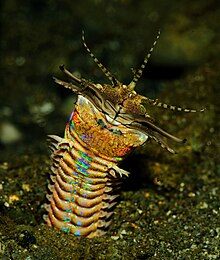Eunicidae: Difference between revisions
Appearance
Content deleted Content added
removed Category:Ordovician first appearances; added Category:Extant Ordovician first appearances using HotCat |
Cyberbot II (talk | contribs) Rescuing 1 sources. #IABot |
||
| Line 41: | Line 41: | ||
|location=Oregon, USA |
|location=Oregon, USA |
||
|postscript=<!--none--> |
|postscript=<!--none--> |
||
}}</ref><ref>{{Cite web|title=Giant Sea Worm Unmasked as Coral Killer |url=http://www.bluereefaquarium.co.uk/news-from-newquay/coral-worm.htm |publisher=Web.archive.org |date=2012-11-21 |accessdate=2015-06-07 |deadurl=yes |archiveurl=https://web.archive.org/web/20121121033342/http://www.bluereefaquarium.co.uk/news-from-newquay/coral-worm.htm |archivedate=November 21, 2012 }}</ref> |
|||
}}</ref><ref>{{Cite web |
|||
|title=Giant Sea Worm Unmasked as Coral Killer |
|||
|url=https://web.archive.org/web/20121121033342/http://www.bluereefaquarium.co.uk/news-from-newquay/coral-worm.htm |
|||
|publisher=Web.archive.org |
|||
|date=2012-11-21 |
|||
|accessdate=2015-06-07 |
|||
}}</ref> |
|||
They have an evertible proboscis.<ref name="Fauchald1992" /> |
They have an evertible proboscis.<ref name="Fauchald1992" /> |
||
Revision as of 15:02, 29 March 2016
| Eunicidae Temporal range:
| |
|---|---|

| |
| Eunice aphroditois | |
| Scientific classification | |
| Kingdom: | |
| Subkingdom: | |
| Phylum: | |
| Class: | |
| Subclass: | |
| Order: | |
| Family: | Eunicidae
|
| Genera | |
Eunicidae is a family of polychaetes. Many eunicids reach a considerable size. Their jaws are known from Ordovician sediments.[1] They live throughout the seas; a few species are parasitic.[1]
One of the most conspicuous of the eunicids is the giant, dark-purple, iridescent "Bobbit worm" (Eunice aphroditois), found at low tide under boulders on southern Australian shores. Its robust, muscular body can be as long as 2 m.[2]
Some species of eunicids prey on coral. Individuals have been found living unnoticed in reef aquaria for long enough to grow to great size.[3][4]
They have an evertible proboscis.[1]
References
- ^ a b c Fauchald, K. (1992). "A review of the genus Eunice (Polychaeta: Eunicidae) based upon type material" (PDF). Smithsonian Contributions to Zoology. 523: 1–422. doi:10.5479/si.00810282.523.
- ^ Keith Davey (2000). "Eunice aphroditois". Life on Australian Seashores. Retrieved 2007-10-10.
- ^ Weast, Steve. "The Great Worm Incident". Oregon, USA. Retrieved 2009-03-27.
- ^ "Giant Sea Worm Unmasked as Coral Killer". Web.archive.org. 2012-11-21. Archived from the original on November 21, 2012. Retrieved 2015-06-07.
{{cite web}}: Unknown parameter|deadurl=ignored (|url-status=suggested) (help)
Wikispecies has information related to Eunicidae.
